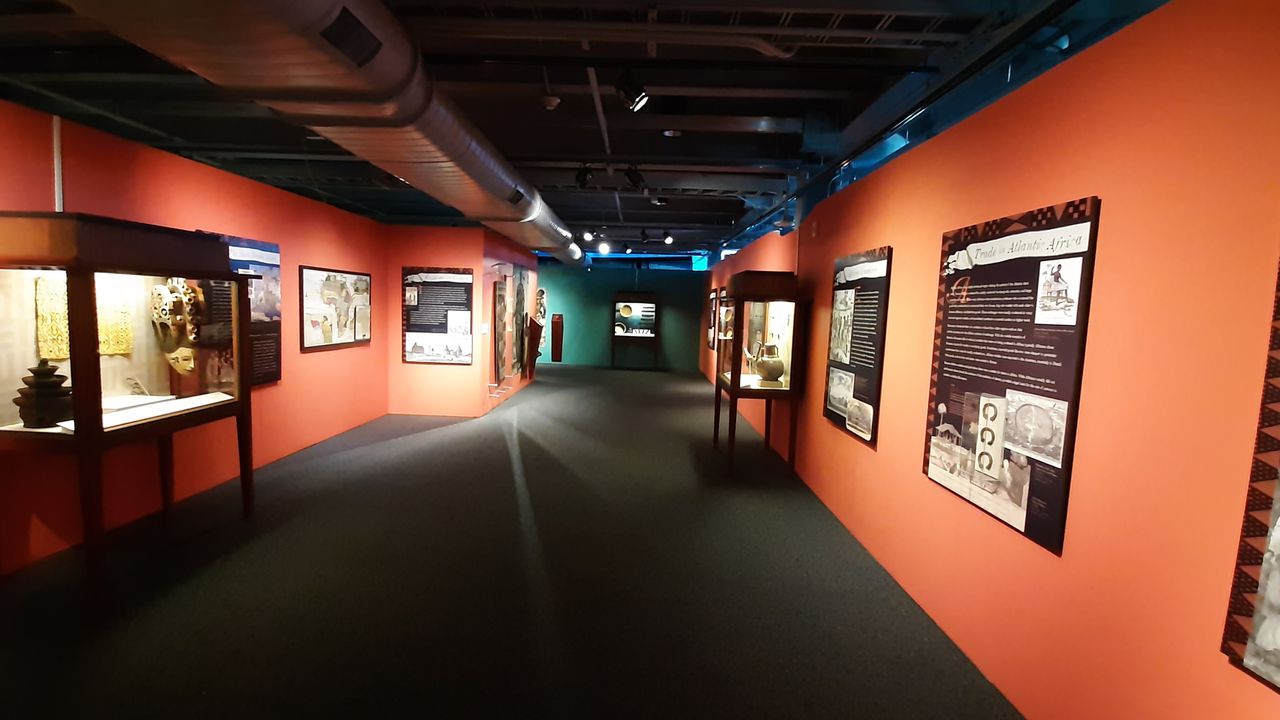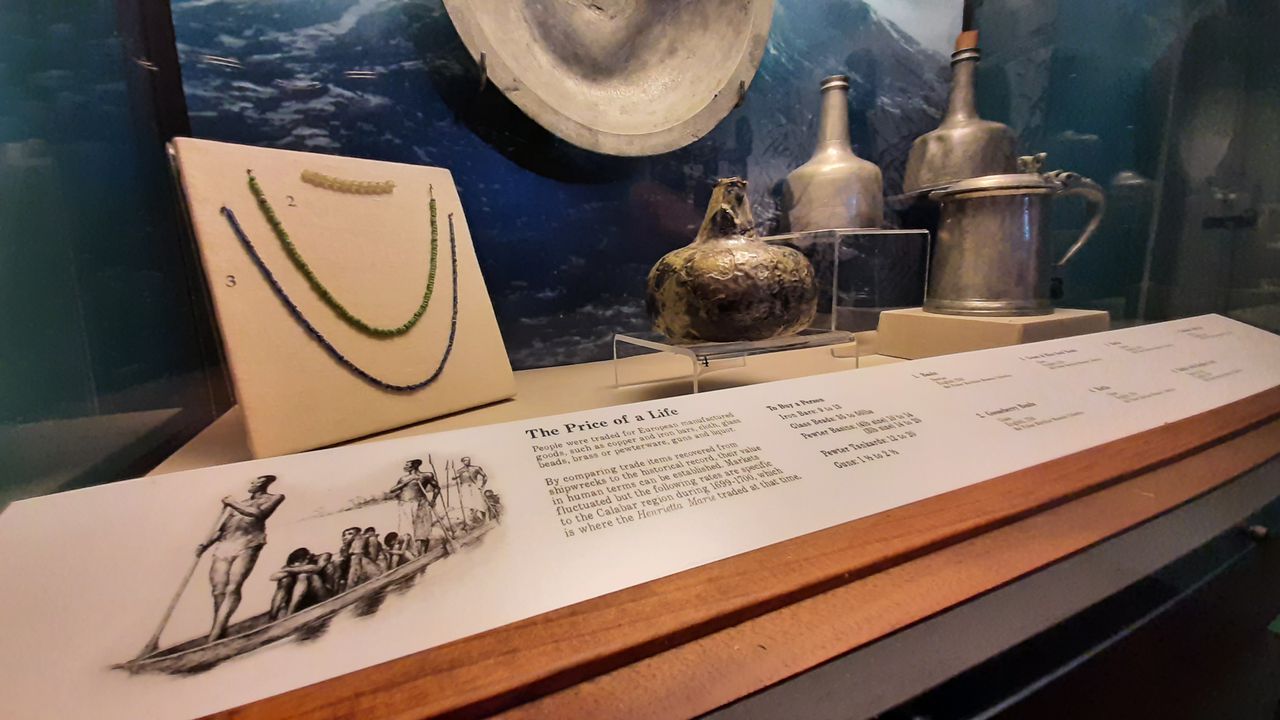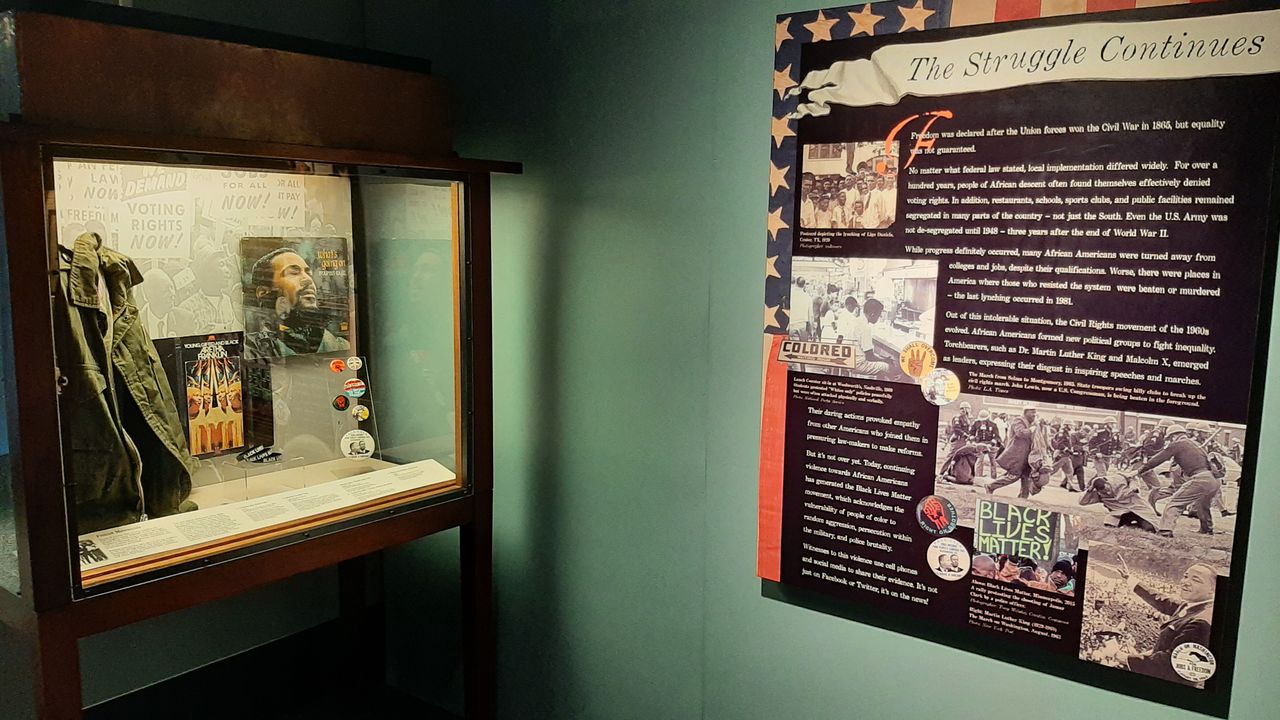‘Spirits of the Passage:’ GulfQuest opens exhibition on slave trade
It’s a jarring thing, to look at bars of pitted iron lined up in a museum display case, and to know that they were meant to be traded for human lives.
But there they sit, in Mobile’s GulfQuest museum, along with many other artifacts and exhibits that add up to “Spirits of the Passage: The Story of the Transatlantic Slave Trade.” Many of them come from the Henrietta Marie, which sank west of Key West in 1700 after delivering captive Africans into slavery in Jamaica, where the brutal conditions of sugar plantation work meant most would survive less than a decade. There’s the ship’s bell; there’s a case full of crude iron shackles used to bond pairs of captives together so that they couldn’t run or fight.
A display in “Spirits of the Passage” notes that while the art of iron smelting was known in Africa as far back as 300 B.C., iron remained expensive. European traders found a reliable demand in Africa for bars of high-quality iron produced in Europe at relatively low cost.Lawrence Specker | [email protected]
“Spirits of the Passage” opened on Wednesday and will run though June at the GulfQuest National Maritime Museum of the Gulf of Mexico. Museum director Mary Elizabeth Harper said that while the opening was quiet, fanfare and special events are planned for early March, after the city gets through Mardi Gras. In the meantime, visitors have full access and school tours groups will begin arriving next week, she said.
What they’ll find is an experience that is as much about information as it is about artifacts. “Spirits of the Passage” provides a broad yet nuanced overview of the evolution of the Atlantic slave trade. Its timeline reaches all the way back to a 15th-century treaty giving Portugal the lead in trading with nations on the west coast of Africa, where internal slavery set the stage for the export of captives.
Those African nations are depicted as highly developed, including regions that “produced fine quality steel and bronze goods, ceramics, and large quantities of textiles.” African elites are described as sophisticated trading partners seeking arms, luxuries and refined iron in exchange for local commodities.

“Spirits of the Passage” fills several rooms and corridors in GulfQuest with display cases and information panels.Lawrence Specker | [email protected]
One gets the sense of a perfect storm building, from treaties and sociopolitical changes that shifted international trade to the growing need for manpower in the New World, where newly subjugated territories were being exploited via plantation farming. All of it, bolstered throughout by human callousness, fueled the horrors of the transatlantic slave trade.
Somewhere between 13% and 33% of the captives shipped out died during the passage, visitors are informed: Most by illness, some by suicide, some during attempted revolts. Those forced to labor on Caribbean sugar plantations had a life expectancy of eight years.

“The Price of a Life:” one display in the “Spirits of the Passage Exhibition” shows items commonly used to barter for slaves, and gives some idea of the rate of exchange in various goods.Lawrence Specker | [email protected]
The exhibition covers the complexity of the trade. Visitors get portraits of legal slavers and the abolitionists who opposed them, illegal slavers and the authorities who hunted them, and the pirates who preyed on slavers but were hardly liberators. “Spirits of the Passage” reaches forward in time to include not only emancipation but the civil rights movement.
Because the exhibition was developed by the Mel Fisher Maritime Museum in Key West, Fla. (in conjunction with the Frazier Museum in Louisville, Ky.), it includes some information about the discovery and exploration of wrecks such as the Henrietta Marie.
Viewing the shackles and other artifacts in Mobile, one can’t help but wonder if similar items will one day be recovered from the wreckage of the Clotilda and displayed in local institutions. “Spirits of the Passage” gives a taste of the powerful emotion they likely will carry. The exhibition features a panel on the Clotilda and another on the legacy of Africatown.
Harper said that as she’s watched the exhibition come together, she’s found that a few of the displays have affected her deeply. She said she hopes “Spirits of the Passage” has the same effect on all visitors.

“Spirits of the Passage” reaches forward in time to include the U.S. civil rights movement, with items such as Marvin Gaye’s iconic “What’s Going On” album cover.Lawrence Specker | [email protected]
“I want everyone to have a similar experience,” she said. “I want them to find something in it that makes the view life differently. I want it to make a difference.”
The exhibition is supported by the Mobile County Commission. For information about GulfQuest hours and ticketing, call 251-436-8901 or visit www.gulfquestmuseum.com.
